
http://www.iaeme.com/IJMET/index.asp 1339 editor@iaeme.com
International Journal of Mechanical Engineering and Technology (IJMET)
Volume 10, Issue 03, March 2019, pp. 1339-1350. Article ID: IJMET_10_03_135
Available online at http://www.iaeme.com/ijmet/issues.asp?JType=IJMET&VType=10&IType=3
ISSN Print: 0976-6340 and ISSN Online: 0976-6359
© IAEME Publication Scopus Indexed
AN INTUITIONISTIC FUZZY MAGNIFIED
TRANSLATION OF KM IDEALS ON K-
ALGEBRA
S. Kailasavalli
Assistant Professors, PSNA College of Engineering and Technology, Dindigul-624622,
Tamilnadu, India.
C.Yamini
Assistant Professors, PSNA College of Engineering and Technology, Dindigul-624622,
Tamilnadu, India.
M.Meenakshi
Assistant Professors, PSNA College of Engineering and Technology, Dindigul-624622,
Tamilnadu, India.
VE.Jayanthi
Professor and Head, Department of Bio medical Engineering, PSNA College of Engineering
and Technology, Dindigul-624622, Tamilnadu, India.
ABSTRACT
Fuzziness is found in engineering, medicine, manufacturing and other areas in our
daily life. Recently, Fuzziness is applied to find the solution of human decision,
reasoning and learning. The concept of intuitionistic fuzzification of subalgebra and
KM ideals of the K-algebra are considered for testing the satisfaction of the properties.
In addition to Intuitionistic fuzzy magnified translations to intuitionistic fuzzy KM ideals
in K-algebra also introduced and their several related properties are tested and proofs
are presented in this work.
Keywords: K-algebra, fuzzy KM ideals, intuitionistic fuzzy KM ideal, intuitionistic
fuzzy magnified translation of KM ideals.
Cite this Article S. Kailasavalli, C.Yamini, M.Meenakshi and VE.Jayanthi, an
Intuitionistic Fuzzy Magnified Translation of Km Ideals on K-Algebra, International
Journal of Mechanical Engineering and Technology, 10(3), 2019, pp. 1339-1350.
http://www.iaeme.com/IJMET/issues.asp?JType=IJMET&VType=10&IType=3

S. Kailasavalli, C.Yamini, M.Meenakshi and VE.Jayanthi
http://www.iaeme.com/IJMET/index.asp 1340 editor@iaeme.com
1. INTRODUCTION
The fuzzy set theory domain is a wide range and its information is incomplete or inaccurate
such as bioinformatics. Initially, the notion of the fuzzy sets and its functions are introduced by
Zadeh[1]. Extension properties of BCK-Algebras are described and it is implicative
[2].Intuitionistic fuzzy set (IFS) is a powerful tool to deal with imprecision. Assigning each
element as a membership degree in IFS is the extension of Zadeh’s fuzzy set and it is
successfully applied and tested by Atanassov[3]. IFS are applied in various fields in artificial
intelligence system of intuitionistic fuzzy for expert systems; neural networks decision making,
machine leaming and semantic representations. The concepts of fuzzy magnified translation
on groups are introduced [4]. Intuitionistic fuzzy magnified translation notion and its various
properties are discussed [5],[6], [7] and [8].The K-Algebras and BCI Algebras are introduced
and the concepts are clearly discussed [9]. Fuzzy ideals of K Algebras are introduced and their
properties are verified [10] and [11] and the extension of Fuzzy KM an ideal on K-algebras is
also introduced and checked [12]. In this paper, Intuitionistic fuzzy and Intuitionistic fuzzy
magnified translations basic concepts are presented in section 2. Intuitionistic fuzzy is defined
in KM ideal and some theorems are verified in section 3 and its morphism properties proof are
in section 4. The following section 5 consists of Intuitionistic fuzzy magnified translations in
KM ideal are defined and their morphism properties are discussed in section 6.
2. PRELIMINARIES
Basic concepts of fuzzy K-algebra and its KM ideal are defined and discussed in this section
for obtaining the results of intuitionistic fuzzy and intuitionistic fuzzy magnified translations
under homomorphism and epimorphism properties.
Definition 2.1:
Let (G, ·, e) be a group with the identity e such that x2 ≠ e for some x(≠ e) ∈ G.
A K-algebra built on G (briefly, K-algebra) is a structure K = (G, ., ⨀, e) where “ ” is a
binary operation on G which is induced from the operation “·”, that satisfies the following:
(k1) (∀a, x, y ∈ G) ((a x) (a y) = (a (y-1 x-1))⨀a),
(k2) (∀a, x ∈ G) (a (a x) = (a x-1) a),
(k3) (∀a ∈ G) (a a = e),
(k4) (∀a ∈ G) (a e = a),
(k5) (∀a ∈ G) (e a = a-1).
If G is abelian, then conditions (k1) and (k2) are replaced by:
(k1’) (∀a, x, y ∈ G) ((a x) (a y) = y x),
(k2’) (∀a, x ∈ G) (a (a x) = x),
respectively. A nonempty subset H of a K-algebra K is called a subalgebra of K if it satisfies:
• (∀a, b ∈ H) (a b ∈ H).
Note that every subalgebra of a K-algebra K contains the identity e of the group (G, ·).
Definition 2.2:
A fuzzy set η in a k-algebra k is called a fuzzy ideal of k if it satisfies:
(i) (∀x∈ 𝐺)(η(e)≥η(x))
(ii) (∀x,𝑦 ∈ 𝐺) (η(y)≥min{η(y ⨀x), η((x⨀(x ⨀ y))})

An Intuitionistic Fuzzy Magnified Translation of Km Ideals on K-Algebra
http://www.iaeme.com/IJMET/index.asp 1341 editor@iaeme.com
Definition 2.3:
An intuitionistic fuzzy set A = {<x, η𝐴(x), ϑ𝐴(x)>: x∈ 𝑅} is called an intuitionistic fuzzy
subalgebra X if it satisfies
i. η𝐴(x*y)≥ min{η𝐴(x),η𝐴(y)} and
ii. ϑ𝐴(x*y) ≤ max{ϑ𝐴(x),ϑ𝐴(y)} for all x,y∈ X.
Definition 2.4:
An intuitionistic fuzzy set A = {<x, η𝐴(x), ϑ𝐴(x)>/x∈ 𝑋} in X is called an intuitionistic fuzzy
ideal of X if it satisfies
I. η𝐴(0) ≥ η𝐴(x), ϑ𝐴(0) ≤ ϑ𝐴(x)
II. η𝐴(x) ≥ min {η𝐴(x*y), η𝐴(y)}
III. ϑ𝐴(x) ≤ max{ϑ𝐴(x*y),ϑ𝐴(y)} for all x,y∈ X.
3. INTUITIONISTIC FUZZY KM-IDEAL:
Intuitionistic Fuzzy is the Extensions of fuzzy is defined and its subdivion of KM ideals are
described below.
Definition 3.1:
Let (X,⊙,0) be a K-algebra, if the following conditions are satisfied, for all x,y,z𝜖X
I. η(0) ≥ η(x).
II. 𝜇(𝑦 ⊙ 𝑧) ≥min{ 𝜇(𝑥 ⊙ 𝑦),𝜇(𝑧 ⊙ 𝑥) }
III. then, a fuzzy subset ηin x is called a fuzzy KM-Ideal of X
Definition 3.2:
An intuitionistic fuzzy set A = {<x, η𝐴(x), ϑ𝐴(x)>/x∈ 𝑋} in K-algebra X is called an
intuitionistic fuzzy KM-ideal of A if
I. η𝐴(0) ≥ η𝐴(x) and ϑ𝐴(0) ≥ ϑ𝐴(x)
II. η𝐴(y⨀ z) ≥ min {η𝐴(x⨀ y), η𝐴(z⨀ x)}
III. ϑ𝐴(y⨀ z) ≤ max {ϑ𝐴(x⨀ y), ϑ𝐴(z⨀ x)}
Theorem 3.3:
Let A be a nonempty subset and intuitionistic fuzzy KM ideals of a k-algebra. Then so is A =
(x, η𝐴,η𝐴
) and A = (x, ϑ𝐴,𝜗𝐴
)
Proof:
We know that,η𝐴(0) ≥η𝐴(x). This implies that 1- η𝐴
(0) ≥ 1- η𝐴
(x)
η𝐴
(0) ≤η𝐴
(x) for every a∈ 𝐴.
Let us consider ∀ a, b, c ∈ 𝑋. Then
η𝐴(y⨀ z) ≥ min {η𝐴(x⨀ y), η𝐴(z⨀ x)}
⟹ 1- η𝐴
(y⨀ z) ≥ min {1- η𝐴
(x⨀ y), 1- η𝐴
(z⨀ x)}
⟹η𝐴
(y⨀ z) ≤ 1- {η𝐴
(x⨀ y), η𝐴
(z⨀ x)}
⟹η𝐴
(y⨀ z) ≤ max {η𝐴
(x⨀ y), η𝐴
(z⨀ x)}
Hence A = (x, η𝐴,η𝐴
) is an intuitionistic fuzzy KM ideal of X.

S. Kailasavalli, C.Yamini, M.Meenakshi and VE.Jayanthi
http://www.iaeme.com/IJMET/index.asp 1342 editor@iaeme.com
To prove the second part,
Let A be an intuitionistic fuzzy KM ideal of a K-algebra X.
Nowϑ𝐴(0) ≤ϑ𝐴(x)
⟹ 1- ϑ𝐴
(0) ≤ 1- ϑ𝐴
(x)
⟹ϑ𝐴
(0) ≥ϑ𝐴
(x) ∀x∈ X.
Now consider ∀ a, b, c ∈ A. Then we have
ϑ𝐴(y⨀ z) ≤ max {ϑ𝐴(x⨀ y), ϑ𝐴(z⨀ x)}
⟹ 1- ϑ𝐴
(y⨀ z) ≤ max { 1- ϑ𝐴
(x⨀ y), 1- ϑ𝐴
(z⨀ x)}
⟹ϑ𝐴
(y⨀ z) ≥ 1- max { ϑ𝐴
(x⨀ y), ϑ𝐴
(z⨀ x)}
⟹ϑ𝐴
(y⨀ z) ≥ min {ϑ𝐴
(x⨀ y), ϑ𝐴
(z⨀ x)}
Hence A = (x, ϑ𝐴,ϑ𝐴
) is an intuitionistic fuzzy KM ideal of X.
Definition 3.4
An ideal A of a KM ideal is said to be closed if 0*x ∈ X, ∀ x ∈ X.
Theorem3.5:
Let A be a nonempty set and an intuitionistic fuzzy closed KM-ideal of a K-algebra A. Then A
= (x, η𝐴,η𝐴
) and A = (x, ϑ𝐴,ϑ𝐴
) is also a closed intuitionisticfuzzy closed KM-ideal.
Proof:
First we prove A = (x, η𝐴,η𝐴
) is a intuitionistic closed fuzzy KM-ideal .
For all x ∈ X we have
η𝐴(0*x) ≤η𝐴(x)⟹ 1- η𝐴
(0*x) ≤ 1-η𝐴
(x)⟹η𝐴
(0*x) ≥η𝐴
(x)
Therefore A = (x, η𝐴,η𝐴
) is a intuitionistic closed KM-ideal of A.
To prove the second part,
let x ∈ X, then we have
ϑ𝐴(0*x) ≥ϑ𝐴(x) ⟹ 1- ϑ𝐴
(0*x) ≥ 1- ϑ𝐴
(x) ⟹ϑ𝐴
(0*x) ≤ϑ𝐴
(x) ∀ a, b, c ∈A.
Hence A = (x, ϑ𝐴,ϑ𝐴
) is an intuitionistic fuzzy closed KM-ideal of A.
Lemma 3.6:
Let A= (η𝐴,ϑ𝐴) be an intuitionistic fuzzy KM ideal of X. If y ≤ x in X, then
η𝐴(y) ≥η𝐴(x), ϑ𝐴(y) ≤ϑ𝐴(x) that is η𝐴 is order-reserving and ϑ𝐴 is order-preserving.
PROOF
Let x, y ∈ X be such that y ≤ x. Then y⨀ x = 0 and so
η𝐴(y) = η𝐴(0⨀ y)
≥ min (η𝐴(x⨀ 0), η𝐴(y⨀ x))
≥ min (η𝐴(x), η𝐴(0)) = η𝐴(x)
Hence η𝐴(y) ≥η𝐴(x)
Similarly
ϑ𝐴(y) = ϑ𝐴(0⨀ y)
≤ max (ϑ𝐴(x⨀ 0), ϑ𝐴(y⨀ x))

An Intuitionistic Fuzzy Magnified Translation of Km Ideals on K-Algebra
http://www.iaeme.com/IJMET/index.asp 1343 editor@iaeme.com
≤ max (ϑ𝐴(x), ϑ𝐴(0))= ϑ𝐴(x)
Hence ϑ𝐴(y) ≤ϑ𝐴(x)
Lemma 3.7:
Let an intuitionistic fuzzy set A= (η𝐴,ϑ𝐴) in X be an intuitionistic fuzzy ideal of X. If the
inequality
(x⨀ y) ≤ z holds in X, then
η𝐴(y⨀ z) ≥ min {η𝐴(x⨀ y), η𝐴(z⨀ x)}
ϑ𝐴(y⨀ z) ≤ max {ϑ𝐴(x⨀ y), ϑ𝐴(z⨀ x)}
Proof:
Let x, y, z ∈ X be such that x⨀ y ≤ z.
Then (x⨀ y) ⨀ z = 0 and thus
η𝐴(y⨀ z) ≥ min {η𝐴(x⨀ y), η𝐴(z⨀ x)}
≥ min {min { η𝐴((x⨀ y) ⨀ z), η𝐴(z⨀ x)}, η𝐴(x⨀ y)}
= min {min {η𝐴(0), η𝐴(z⨀ x), η𝐴(x⨀ y)}
= min {η𝐴(x⨀ y), η𝐴(z⨀ x)}
ϑ𝐴(y⨀ z) ≤ max {ϑ𝐴(x⨀ y), ϑ𝐴(z⨀ x)}
≤ max {max{ϑ𝐴((x⨀ y) ⨀ z), ϑ𝐴(z⨀ x), ϑ𝐴(x⨀ y)}
= max {max{ϑ𝐴(0), ϑ𝐴(z⨀ x)}, ϑ𝐴(x⨀ y)}
= max {ϑ𝐴(z⨀ x), ϑ𝐴(x⨀ y)}
= max {ϑ𝐴(x⨀ y), ϑ𝐴(z⨀ x)}
Hence the proof.
Theorem 3.8:
An intuitionistic fuzzy set A= (η𝐴,ϑ𝐴) is an intuitionistic fuzzy KM ideal of X if and only if the
fuzzy set η𝐴 and ϑ𝐴
are fuzzy KM ideal of X.
Proof:
Let A= (η𝐴,ϑ𝐴) be an intuitionistic fuzzy ideal of X.
Clearly, η𝐴is a fuzzy KM ideal of X.
For every x, y, z ∈X we have
ϑ𝐴
(0) = 1- ϑ𝐴(0) ≥ 1- ϑ𝐴(x) = ϑ𝐴
(x).
ϑ𝐴
(y⨀ z) = 1- ϑ𝐴(x) ≥ 1- max{ϑ𝐴(x⨀ y),ϑ𝐴(z⨀ x) }
= min {1- ϑ𝐴(x⨀ y), 1-ϑ𝐴(z⨀ x)}
= min { ϑ𝐴
(x⨀ y), ϑ𝐴
(z⨀ x)}
Hence ϑ𝐴
is a fuzzy KM ideal of X.
Conversely, assume that η𝐴 and ϑ𝐴
are fuzzy KM ideal of X. For every x, y, z ∈X we get
η𝐴(0) ≥η𝐴(x), 1- ϑ𝐴(0) = ϑ𝐴
(0) ≥ϑ𝐴
(x) = 1- ϑ𝐴(x)
That is,
ϑ𝐴(0) ≤ϑ𝐴(x), η𝐴(y⨀ z) ≥ min {η𝐴(x⨀ y), η𝐴(z⨀ x)}

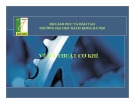
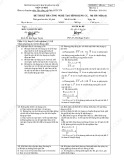

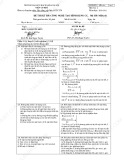
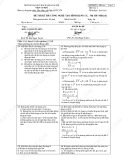
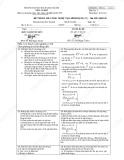
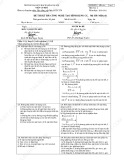
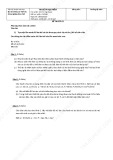
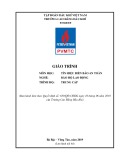
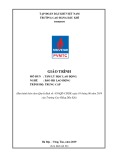










![Bài giảng Truyền động thủy lực và khí nén [mới nhất]](https://cdn.tailieu.vn/images/document/thumbnail/2025/20250728/leminhduc123456/135x160/86371753761074.jpg)

![Bài giảng thực hành Hệ thống truyền lực ô tô [chuẩn nhất]](https://cdn.tailieu.vn/images/document/thumbnail/2025/20250728/vijiraiya/135x160/45981753691742.jpg)


